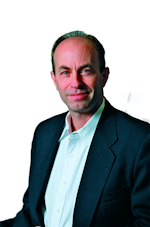Fiberguide unveils optical fibers with randomized antireflection nanostructured end faces
Fiberguide Industries (Stirling, NJ) now has its RARe Motheye optical fibers on the market; the technology, which the company licensed from TelAztec (Burlington, MA) in March of this year, uses optical surface nanostructures derived from those of nocturnal insects such as moths to improve antireflective (AR) properties of the fibers' end faces.
Motheye nanostructures have been found to reflect little or no light regardless of the angle over broad spectral regions. Fiberguide uses a randomized process to create similar nanostructures on the fiber's end surface. The result for fiber-optic assemblies is an AR wavelength range of 400 to 2200 nm and high durability and damage thresholds when compared with commonly used AR coatings, says Fiberguide. Because the AR structure closely matches the underlying material, damage thresholds are typically close to those of bare fiber. Motheye fibers are also hydrophobic, allowing simple water cleanup of fiber faces.
The improved fiber end-face AR properties are of general use for high-power delivery, research and development, medical, photonics, and industrial applications, according to Fiberguide. The RARe Motheye fibers are available with core sizes ranging from 3 µm to 3 mm in step-index multimode or custom single-mode configurations. Material options include silica core, silica clad, polymer coated, and metal-coated construction.
For more info, see www.fiberguide.com (U.S.) or www.fiberguide.cn (China).
Source: Fiberguide Industries

John Wallace | Senior Technical Editor (1998-2022)
John Wallace was with Laser Focus World for nearly 25 years, retiring in late June 2022. He obtained a bachelor's degree in mechanical engineering and physics at Rutgers University and a master's in optical engineering at the University of Rochester. Before becoming an editor, John worked as an engineer at RCA, Exxon, Eastman Kodak, and GCA Corporation.
